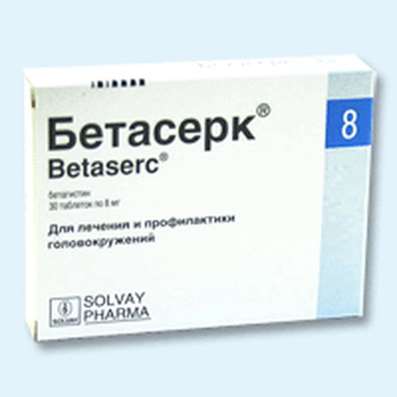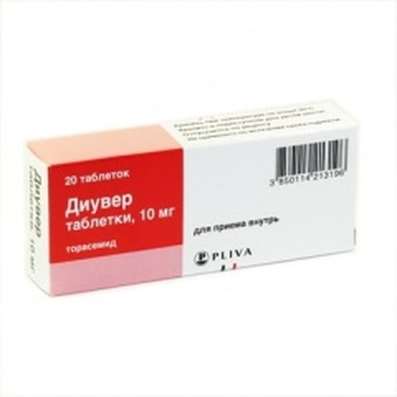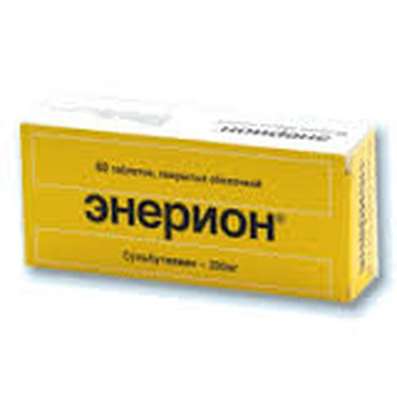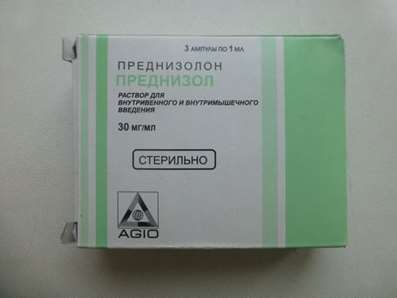Instruction for use: Reminyl
I want this, give me price
Active substance: Galantamine
Code ATX N06DA04 Galantamine
Pharmacological group
Cholinesterase inhibitor [m-, n-cholinomimetics, incl. Anticholinesterase drugs]
Nosological classification (ICD-10)
F00 Dementia in Alzheimer's Disease (G30 +)
Alzheimer's dementia, Dementia in Alzheimer's disease
Composition
Capsules of prolonged release 1 caps.
active substance:
Galanthamine hydrobromide (based on base) 8 mg
16 mg
24 mg
Auxiliary substances: sugar spheres (composed of corn and corn starch); Hypromellose 2910 (5 mPa.s); Macrogol 400; Ethylcellulose (20 mPa.s); Diethylphthalate
Capsule shell: gelatin; Titanium dioxide; Iron oxide red (for capsules 16 and 24 mg); Iron oxide yellow (for capsules 24 mg)
Description of dosage form
Capsules 8 mg: hard gelatinous, No. 4, consisting of an opaque body and a lid of white color with a printed symbol "G8".
Capsules 16 mg: hard gelatinous, No. 2, consisting of an opaque body and a cap of light pink color with a printed symbol "G16".
Capsules 24 mg: hard gelatinous, No. 1, consisting of an opaque body and a lid of a pinkish-brown color with a printed symbol "G24".
The contents of capsules are granules of white or almost white color.
pharmachologic effect
Pharmacological action - anticholinesterase.
Pharmacodynamics
Galantamine, being a tertiary alkaloid, is a selective competitive and reversible inhibitor of acetylcholinesterase. In addition, galantamine enhances the effect of acetylcholine on nicotinic receptors, apparently due to binding to the allosteric portion of the receptor. By increasing the activity of the cholinergic system, cognitive function can improve in patients with Alzheimer's dementia.
Pharmacokinetics
Galantamine is characterized by a slow clearance (clearance from the plasma is about 300 ml / min) and moderate Vd (mean Vd in the steady state is 175 liters). Elimination of galantamine is bi-exponential, and the final T1 / 2 is approximately 7-8 hours. After a single oral intake of 8 mg galantamine, it is rapidly absorbed from the digestive tract; Its Cmax was achieved after 1.2 hours and was (43 ± 13) ng / ml, and the mean AUC0-∞ is (427 ± 102) ng · h / ml. Absolute bioavailability of galantamine by oral administration is 88.5%. The intake of galantamine with food slows its absorption (Cmax decreases by 25%), but does not affect the amount of absorbed drug (AUC).
After repeated administration of galantamine at a dose of 12 mg twice a day, the average concentrations at the end of the dose period and Cmax in the plasma ranged from 30 to 90 ng / ml. The pharmacokinetics of galantamine is linear in the dose range of 4-16 mg twice a day.
Within 7 days after a single oral intake of 4 mg of 3H-galantamine, 90-97% of radioactivity was excreted in urine and 2.2-6.3% with feces. After oral administration, 18-22% of the dose was excreted as unchanged galantamine in urine for 24 hours, the renal clearance was about 65 ml / min, which is 20-25% of the total clearance from the plasma.
The main ways of metabolism are N-oxidation, N-demethylation, O-demethylation, glucuronization and epimerization. In people with active metabolism of CYP2D6 substrates, the most important metabolic pathway is O-demethylation. The number of radioactive substances excreted in urine and feces in people with fast and slow metabolism did not differ. In vitro studies have shown that the main isoenzymes of the cytochrome P450 system involved in galantamine metabolism are 2D6 and 3A4.
In the plasma of people with fast and slow metabolism, the main part of radioactive substances is unchanged galantamine and its glucuronide. In the plasma of people with rapid metabolism, glucuronide O-desmethylgalanthamine is also found. After a single administration of galanthamine in the plasma of fast and slow metabolizers, none of the active metabolites (norgalanthamn, O-demethyl-galantamine and O-demethyl-norgalanthamine) was present in the unconjugated form. Norgalantamine was detected in the plasma of patients after repeated administration of galantamine, but its amount was no more than 10% of the level of galantamine.
The results of clinical trials have demonstrated that in patients with Alzheimer's disease the concentration of galantamine in blood plasma is 30-40% higher than in young healthy individuals.
The pharmacokinetic parameters of galantamine in patients with mild violations of the liver function (5-6 points on the Child-Pugh scale) were similar to those of healthy individuals. In patients with moderate impaired liver function (7-9 points on the Child-Pugh scale), AUC and T1 / 2 galantamine were increased by about 30% (see "Method of administration and dose").
The distribution of galantamine was studied in young patients with varying degrees of impaired renal function. The excretion of galantamine was weakened as Cl decreased creatinine. In patients with impaired renal function of moderate severity (Cl creatinine 52-104 ml / min), the concentration of galanthamine in blood plasma was increased by 38%, and in patients with severe impairment (Cl creatinine 9-51 ml / min) - increased by 67% Compared with healthy people of the same age and weight (Cl creatinine> 121 ml / min).
Population pharmacokinetic study and analysis using a number of models have shown that in patients with Alzheimer's disease and renal dysfunction the dose of galantamine should not be adjusted if Cl creatinine is at least 9 ml / min (see "Method of administration and dose"), t .to. The clearance of galantamine in patients with Alzheimer's disease is reduced.
Binding to plasma proteins: the degree of galantamine binding to plasma proteins is small and amounts to (17.7 ± 0.8)%. In whole blood, galantamine is predominantly in shaped elements (52.7%) and in plasma (39%), whereas its fraction bound to plasma proteins is only 8.4%. The ratio of galanthamine blood / plasma concentrations is 1.17.
In a comparative study of the bioavailability of Reminyl® in the form of capsules with a sustained release of active substance taken at a dose of 24 mg once a day and in the form of immediate-release tablets taken at a dose of 12 mg twice a day, the bioequivalence of these dosages In terms of AUC24 h and a minimum concentration of Cmin in the equilibrium state. Cmax, achieved 4.4 hours after taking the capsules at a dose of 12 mg 1 time per day, was approximately 24% less than after taking the tablets at a dose of 12 mg 2 times a day. The intake of food did not affect the bioavailability of Reminyl® in the form of capsules with a sustained release of the active substance in the equilibrium state. In the study of the dose dependence of the pharmacokinetics of Reminyl® in the form of capsules with sustained release of active substance in healthy elderly and young people, Css in plasma of people of both age groups was achieved within 6 days at all doses (8, 16 or 24 mg). In both age groups, the pharmacokinetics in the equilibrium state directly depended on the dose in the investigated dose range (8-24 mg).
Indications
Reminyl ® is indicated for the treatment of dementia of the Alzheimer's type of mild or moderate degree, incl. With chronic disorders of cerebral circulation.
Contraindications
Hypersensitivity to galantamine hydrobromide or to any auxiliary substance that is part of this drug;
Patients with severe renal impairment (Cl creatinine less than 9 mL / min) - due to lack of data on use;
Severe violations of the liver.
With caution: general anesthesia; Bronchial asthma, COPD; Bradycardia, AV blockade, sinus node weakness syndrome, unstable angina; Concomitant therapy with drugs slowing heart rate (digoxin, beta-adrenoblockers); Peptic ulcer of the stomach and duodenum, gastrointestinal obstruction, period after surgery on the gastrointestinal tract; epilepsy; Obstruction of the urinary tract, the period after the previous operation on the bladder.
pregnancy and lactation
Studies of the use of Reminyl® in pregnant women have not been conducted.
Reminyl® can be given to pregnant women only if the potential benefit to them outweighs the possible risk to the fetus.
It is not known whether Reminyl® is excreted in breast milk, no studies have been conducted with lactating women. Women who receive Reminyl® should abstain from breastfeeding.
Side effects
This section presents side effects, which, based on a comprehensive assessment of the available information, have been attributed to the use of galanthamine hydrobromide. In some cases, the causal relationship with the intake of galanthamine hydrobromide can not be reliably established. In addition, because clinical trials are conducted under different conditions, the incidence of adverse events in clinical trials of the drug can not be directly compared with the frequencies in clinical studies of another drug and may not reflect the incidence of adverse events in clinical practice.
Nausea and vomiting - the most common adverse events in clinical trials (frequency - 20.7 and 10.5%, respectively) - were observed when choosing a dose of the drug, continued in most cases for less than 1 week and were mostly episodic. The administration of antiemetics and the provision of adequate fluid intake are most effective in such cases.
Side effects of Reminyl® in therapeutic doses are given with frequency distribution and organ systems. The frequency of side effects was classified as follows: very often (≥1 / 10 cases), often (≥1 / 100, <1/10 cases) infrequently (≥1 / 1000 and <1/100 cases), rarely (≥1 / 10000 and <1/1000 cases) and very rarely (<1 / 100,000 cases).
From the immune system: infrequently - hypersensitivity.
Metabolic and nutritional disorders: often - decreased appetite; Infrequent - dehydration.
Mental disorders: often - depression, hallucinations; Infrequently - visual and auditory hallucinations.
From the nervous system: often - dizziness, headache, tremor, fainting, blocking, drowsiness; Infrequently - perversion of taste, hypersomnia, paresthesia, convulsions. Seizures are a class effect observed with the use of acetylcholinesterase inhibitors, a means for treating dementia, and involving seizures and seizures.
Ophthalmic disorders: infrequent - blurred vision.
From the side of the ear and the labyrinth: infrequently - noise in the ears.
From the CCC: often - bradycardia, increased blood pressure; Infrequently - AV blockade of I degree, palpitation, sinus bradycardia, supraventricular extrasystole, hot flashes, lowering blood pressure.
From the digestive tract: very often - nausea, vomiting; Often - diarrhea, abdominal pain, indigestion, gastrointestinal discomfort; Infrequent - vomiting.
Hepatobiliary disorders: rarely - hepatitis.
From the skin and subcutaneous tissues: infrequently - increased sweating; Very rarely - Stevens-Johnson syndrome, acute generalized eczematous pustulosis, erythema multiforme.
From the musculoskeletal system and connective tissue: often - muscle spasms; Infrequently - muscle weakness.
Common violations: often - fatigue, weakness, malaise.
Changes in measurements and laboratory indicators: often - weight loss; Infrequently - an increase in the activity of liver enzymes.
Trauma, intoxication and complications of manipulation: often - falling, lacerations.
Interaction
Pharmacodynamic interactions
Due to its inherent mechanism of action, galantamine can not be used simultaneously with other cholinomimetics.
Galantamine is an antagonist of anticholinergic drugs. Like other holinomimetics, galantamine can enter into pharmacodynamic interaction with drugs that lower heart rate (eg, digoxin and beta-blockers).
Being a holinomimetic, galantamine can strengthen the neuromuscular block of the depolarization type during anesthesia (for example, when using as a peripheral muscle relaxant suksametonium bromide).
Pharmacokinetic interactions
Various metabolic pathways and renal excretion are involved in the elimination of galantamine. In vitro studies have shown that the main role in the metabolism of galantamine is played by the coenzymes CYP2D6 and CYP3A4.
The inhibition of secretion of gastric juice does not impair the absorption of galantamine.
Other drugs that affect the metabolism of galantamine
Drugs that are potent inhibitors of coenzymes CYP2D6 and CYP3A4 can increase the galactamine AUC. Pharmacokinetic studies with repeated administration of drugs showed that the AUC of galantamine is increased by 30 and 40% with simultaneous application of it to ketoconazole and paroxetine, respectively.
Drugs that are potent inhibitors of coenzymes CYP2D6 and CYP3A4 can increase the galactamine AUC. Pharmacokinetic studies with repeated administration of drugs showed that the AUC of galantamine is increased by 30 and 40% with simultaneous application of it to ketoconazole and paroxetine, respectively. When used concomitantly with erythromycin, which is also an inhibitor of the CYP3A4 enzyme, the galactamine AUC only increases by about 10%. Pharmacokinetic studies in patients with Alzheimer's disease showed that the clearance of galantamine decreased by about 25-33% with simultaneous use of this drug with known inhibitors of the CYP2D6 enzyme such as amitriptyline, fluoxetine, fluvoxamine, paroxetine or quinidine.
Thus, at the beginning of treatment with a strong inhibitor of the enzymes CYP2D6 and CYP3A4, the frequency of cholinergic adverse events, mainly nausea and vomiting, may increase. In these situations, depending on the tolerability of therapy for a specific patient, it may be necessary to reduce the maintenance dose of galantamine.
The antagonist of N-methyl-D-aspartate (NMDA) receptors memantine in a dose of 10 mg once a day for 2 days, then 10 mg twice a day for 12 days did not affect the pharmacokinetics of galantamine in the equilibrium state after taking a dose of 16 mg 1 time per day.
Effect of galantamine on the metabolism of other drugs
Therapeutic doses of galanthamine (12 mg twice daily) did not affect the kinetics of digoxin and warfarin. Galantamine did not affect the increase in PV caused by warfarin.
In vitro studies have shown that galantamine has a very weak ability to inhibit the main forms of human cytochrome P450.
Dosing and Administration
Inside, 1 time per day (in the morning), preferably during meals.
The initial dose. The recommended initial dose is 8 mg / day.
Patients already taking Reminyl® in other forms with immediate release of the active substance (Table) may switch to Reminyl® in the form of sustained-release capsules by taking the last dose in the form of tablets in the evening and taking capsules once a day at The next morning.
When switching from Reminyl ® in the form of tablets with immediate release of the active substance taken 2 times a day to Reminyl ® in the form of prolonged-action capsules, taken once a day, the total daily dose should remain unchanged.
During treatment, you must take a sufficient amount of fluid.
Supportive dose. The initial maintenance dose is 16 mg / day, patients should take this dose for at least 4 weeks.
The question of increasing the maintenance dose to the maximum recommended 24 mg / day should be addressed after a comprehensive assessment of the clinical situation, in particular the effect achieved and tolerability.
After the abrupt withdrawal of Reminyl ® (for example, when preparing for surgery), the symptoms do not aggravate.
If you take a break for a few days, take the initial dose of Reminyl ® and then increase the dose according to the above scheme to the previous maintenance dose.
Children. There is no significant experience in the use of Reminyl ® in children.
Patients with liver and kidney disease. In patients with moderate to severe liver damage, plasma galantamine concentrations may be higher than in patients without such lesions. In patients with moderate impairment of liver function, the initial dose (based on pharmacokinetic data) should be 8 mg once a day every other day, it should be taken in the morning for at least 1 week. After that, patients can take 8 mg once a day for at least 4 weeks. The daily dose should not exceed 16 mg.
Patients with severe impairment of liver function (> 9 on the Child-Pugh scale) Reminyl® is not recommended.
Patients with severe renal impairment (Cl creatinine <9 mL / min) Reminyl® is not recommended (due to lack of data).
In patients with Cl creatinine more than 9 ml / min dose need not be adjusted.
Concomitant therapy. If the patient receives strong inhibitors of coenzymes CYP2D6 or CYP3A4, it may be necessary to reduce the dose of Reminyl®.
Overdose
Symptoms: it is assumed that the objective and subjective symptoms of a severe overdose of galantamine will be similar to similar symptoms in overdosage of other cholinomimetics. There are mainly toxic effects from the central nervous system, the parasympathetic nervous system and neuromuscular synapses. In addition to muscle weakness or fasciculation, some or all of the symptoms of the cholinergic crisis can be observed: severe nausea, vomiting, abdominal cramping, increased salivation, lacrimation, urinary and fecal incontinence, severe sweating, bradycardia, decreased blood pressure, collapse and convulsions. Pronounced muscular weakness in combination with hypersecretion of the mucous membrane of the trachea and bronchospasm can lead to a lethal blockade of the airways.
Post-marketing control reports describe the development of bidirectional-spindle ventricular tachycardia, prolongation of the QT interval, ventricular tachycardia with short-term loss of consciousness with a random intake of 32 mg of Reminyl ® per day.
Treatment: as with an overdose of any other drug, it is necessary to carry out the usual supportive measures. In severe cases, anticholinergics such as atropine can be used as a general antidote. Initially, it is recommended to introduce 0.5-1 mg IV, the frequency and magnitude of subsequent doses depend on the dynamics of the clinical state of the patient.
Overdose management strategies are constantly being improved, and therefore, you should contact the nearest poison treatment center for the latest recommendations regarding the treatment of a galantamine overdose.
special instructions
Use of Reminyl ® for other types of dementia or other memory disorders
The positive effects of Reminyl® in patients with other types of dementia and other types of memory impairment have not been demonstrated.
Safety in patients with mild cognitive impairment (SCN)
Reminyl® is not intended for patients with mild cognitive impairment (SCN), i.e. For patients with isolated memory impairment exceeding the expected level for their age and education, but not meeting the criteria of Alzheimer's disease.
Two biennial studies in patients with SCN did not reveal the effectiveness of the drug. There was a higher mortality rate (compared with placebo) from various adverse reactions (about half of cases are associated with reactions from the CCC). Given the data obtained from a significant proportion of patients who discontinued treatment before the completion of the double-blind period, there is no reason to believe that the risk of death increases with the passage of time in patients treated with Reminyl®. Of the placebo group, more patients than from the galantamine group interrupted treatment before death, which could explain the initially recorded difference in mortality.
The results of SKN studies differ from the results of studies of Alzheimer's disease. In pooled studies of Alzheimer's disease (n = 4614), the death rate was numerically higher in the placebo group than in the group treated with Reminyl®.
The diagnosis should be carried out in accordance with the current guidelines for Alzheimer's disease. Therapy should be carried out under the supervision of a doctor and can only be started if the caregiver is able to ensure a constant intake of the drug.
Weight Control
Patients with Alzheimer's disease lose weight. Treatment with acetylcholinesterase inhibitors, including galantamine, is accompanied by a decrease in the body weight of such patients, and therefore during the treatment it is necessary to monitor changes in body weight.
Severe skin reactions
The appearance of severe skin reactions (Stevens-Johnson syndrome and acute generalized eczematous pustulosis) was observed in patients taking Reminyl®. It is recommended to inform patients about the signs of severe skin reactions and about the need to stop using Reminyl® at the first appearance of skin rash.
Like other cholinomimetics, Reminyl® should be used with caution in the following conditions:
Heart disorders: due to their pharmacological effects holinomimetiki can cause vagotonic effects from the heart (for example, bradycardia). The consequences of such effects may be most serious in patients with sinus node weakness syndrome and with other supraventricular conduction disorders, in patients who simultaneously receive heart rate reduction drugs such as digoxin or beta-blockers, as well as in patients with electrolyte disorders For example, with hyperkalemia, hypokalemia).
Caution should be exercised when using galantamine in patients with cardiovascular diseases, incl. In the period after the recently transferred myocardial infarction, with acute atrial fibrillation, AV blockade of II degree and above, chronic heart failure (especially III-IV functional class according to the NYHA classification).
Treatment with remineral was accompanied by a faint and rarely expressed bradycardia. Use with caution in unstable angina.
Gastrointestinal diseases: in patients with an increased risk of developing a peptic ulcer, for example having a history of ulcer or predisposed to it, incl. When taking NSAIDs (non-steroidal anti-inflammatory drugs), it is necessary to monitor the relevant symptoms. It should be noted, however, that clinical studies did not reveal an increase in patients receiving Reminyl ®, compared with patients who received placebo, the incidence of peptic ulcers and gastrointestinal bleeding. Reminyl® is not recommended for patients with gastrointestinal obstruction, as well as for patients who have recently undergone digestive surgery.
Neurological diseases: with the use of Reminyl®, convulsions were observed. It should be remembered, however, that convulsive activity may be a manifestation of Alzheimer's disease itself. In rare cases, an increase in the cholinergic tone may lead to a worsening of the course of Parkinson's disease. An analysis of pooled data from placebo-controlled studies showed that cerebrovascular disorders were rarely observed in patients with Alzheimer's dementia who received galantamine treatment. This should be taken into account when using galantamine in patients with cerebrovascular pathologies.
Pulmonary diseases: due to the cholinomimetic activity Reminyl® should be used with caution in patients suffering from severe bronchial asthma, COPD, or acute pulmonary infections.
Genitourinary diseases: Reminyl® is not recommended for patients with urinary tract obstruction, as well as for patients who have recently undergone bladder surgery.
Surgical and medical procedures: galantamine, which is holinomimetic, is likely to enhance muscle relaxation of succinylcholine type during anesthesia, especially with pseudocholinesterase deficiency.
Influence on driving and working with machinery. Alzheimer's disease can adversely affect the ability to drive cars and work with mechanisms. In addition, Reminyl®, like other holinomimetics, can cause drowsiness and dizziness, which adversely affect driving and handling mechanisms, especially in the first weeks after the start of treatment with this drug.
Relies Form
Capsules of prolonged action, 8 mg. For 7 caps. In a blister of a composite material (PVC, PE, PVDC and aluminum foil); 1 or 4 blisters in a cardboard box. For 300 caps. In the vial from PE; On 1 fl. In a cardboard box.
Capsules of prolonged action, 16 mg. For 7 caps. In a blister of a composite material (PVC, PE, PVDC and aluminum foil); For 4, 8 or 12 blisters in a cardboard bundle. For 300 caps. In a vial of PE; On 1 fl. In a cardboard box.
Capsules of prolonged action, 24 mg. For 7 caps. In a blister of a composite material (PVC, PE, PVDC and aluminum foil); For 2, 4, 8 or 12 blisters in a cardboard bundle. For 300 caps. In a vial of PE; On 1 fl. In a cardboard box.
Terms of leave from pharmacies
On prescription.
Storage conditions
At a temperature of 15-30 ° C.
Keep out of the reach of children.
Shelf life
2 years.
Do not use after the expiry date printed on the package.

 Cart
Cart





